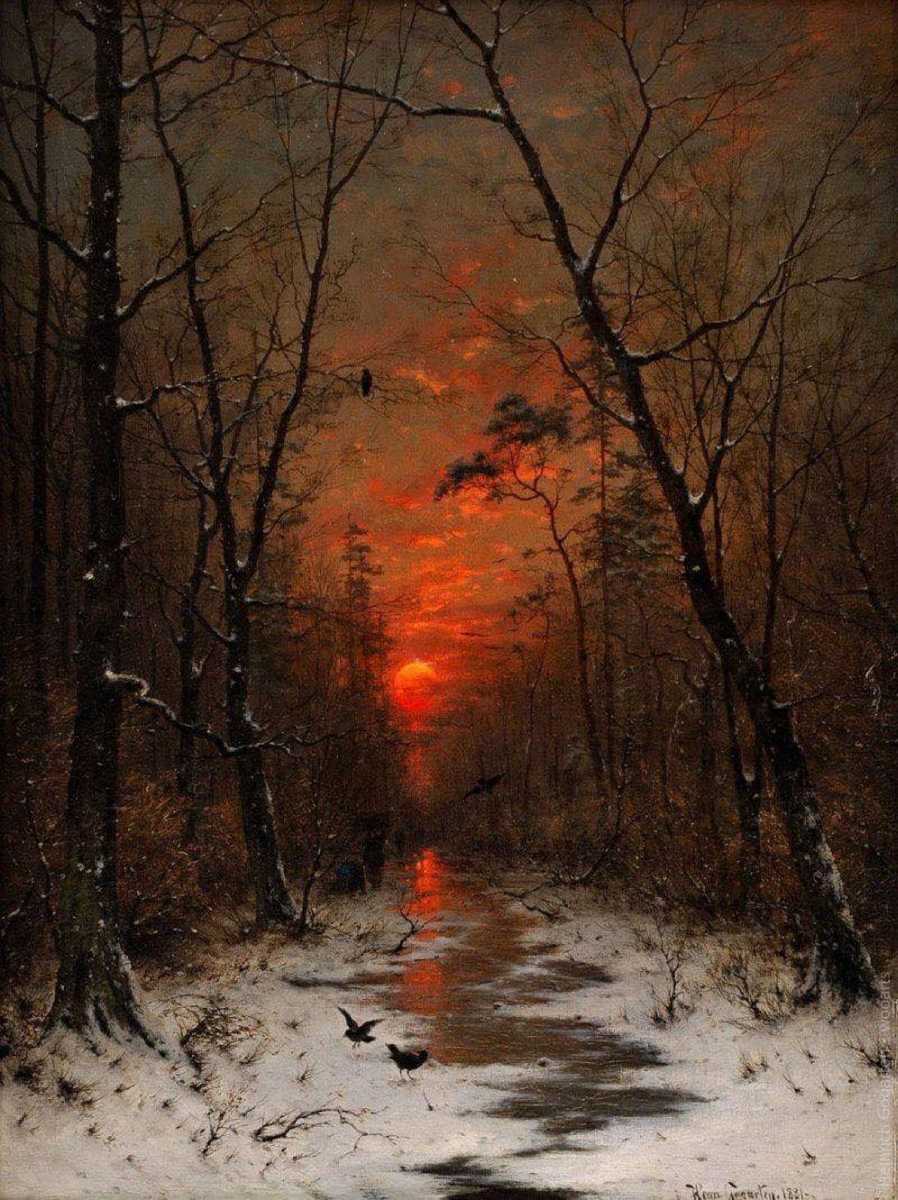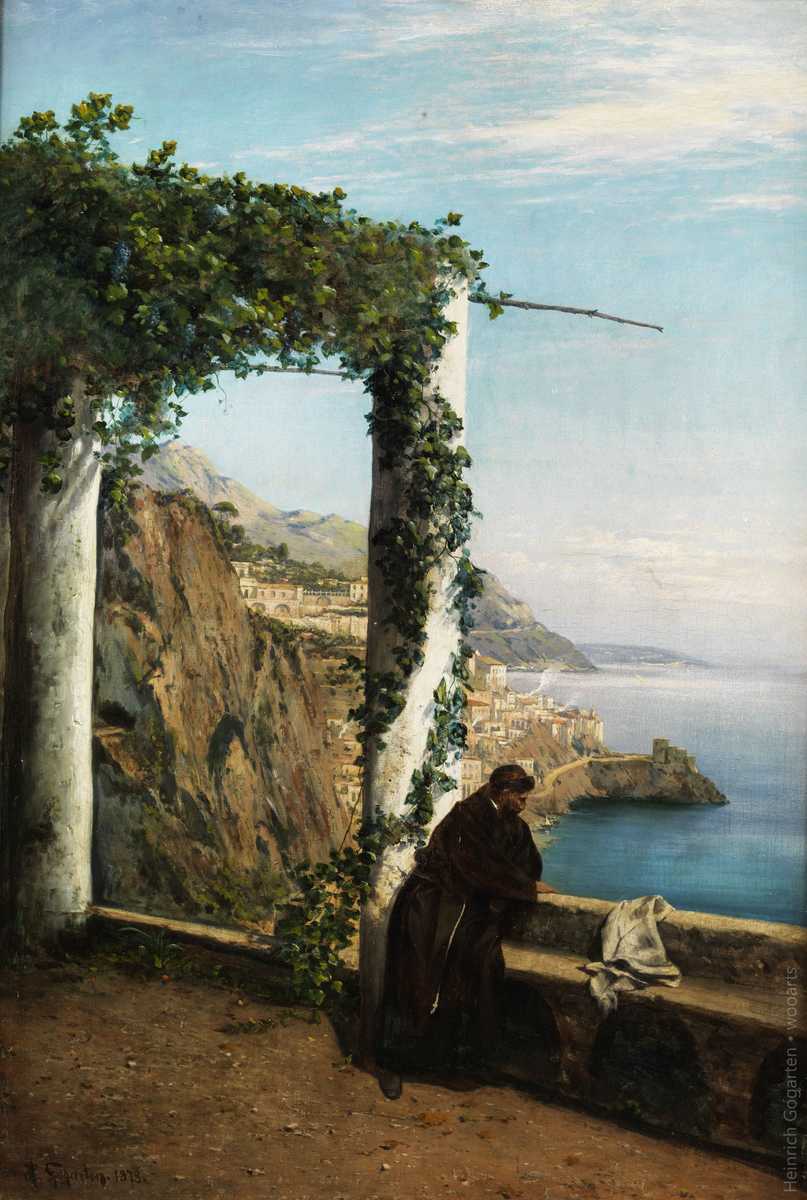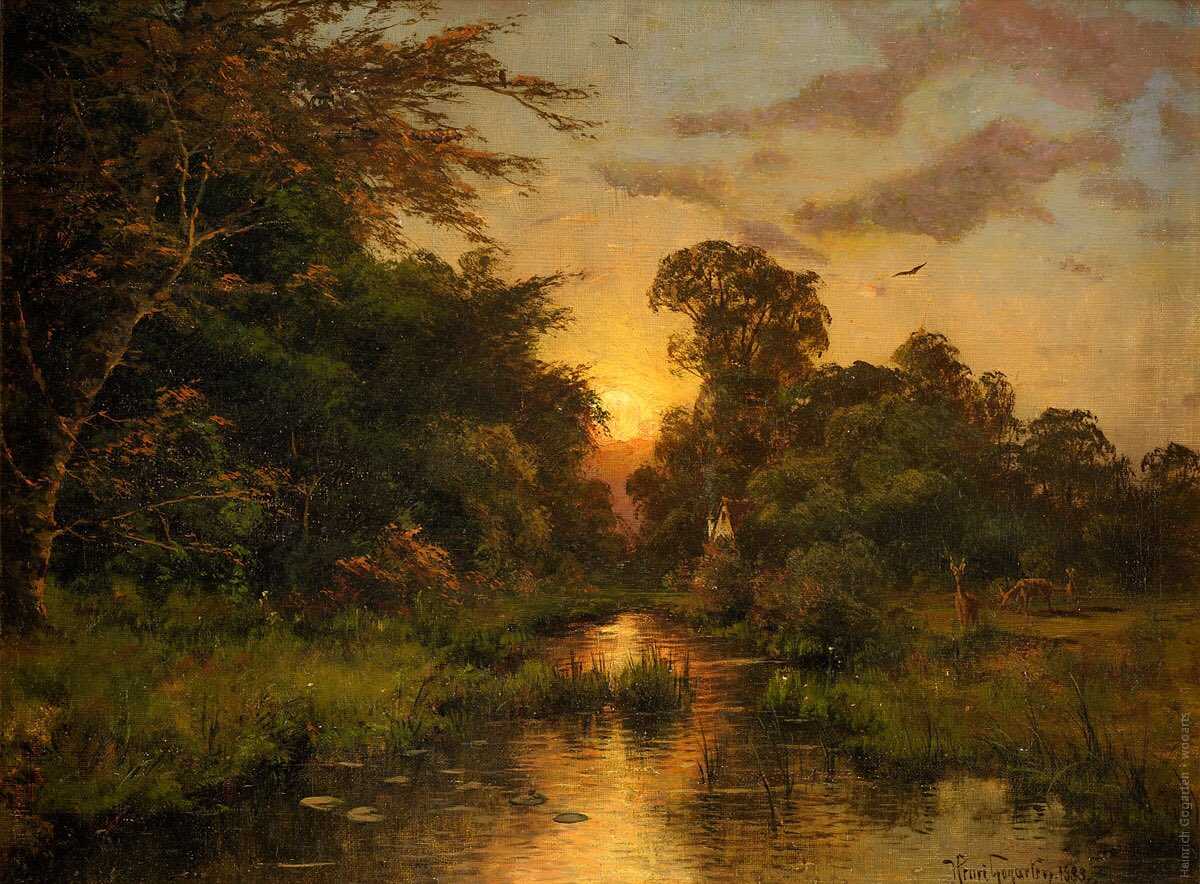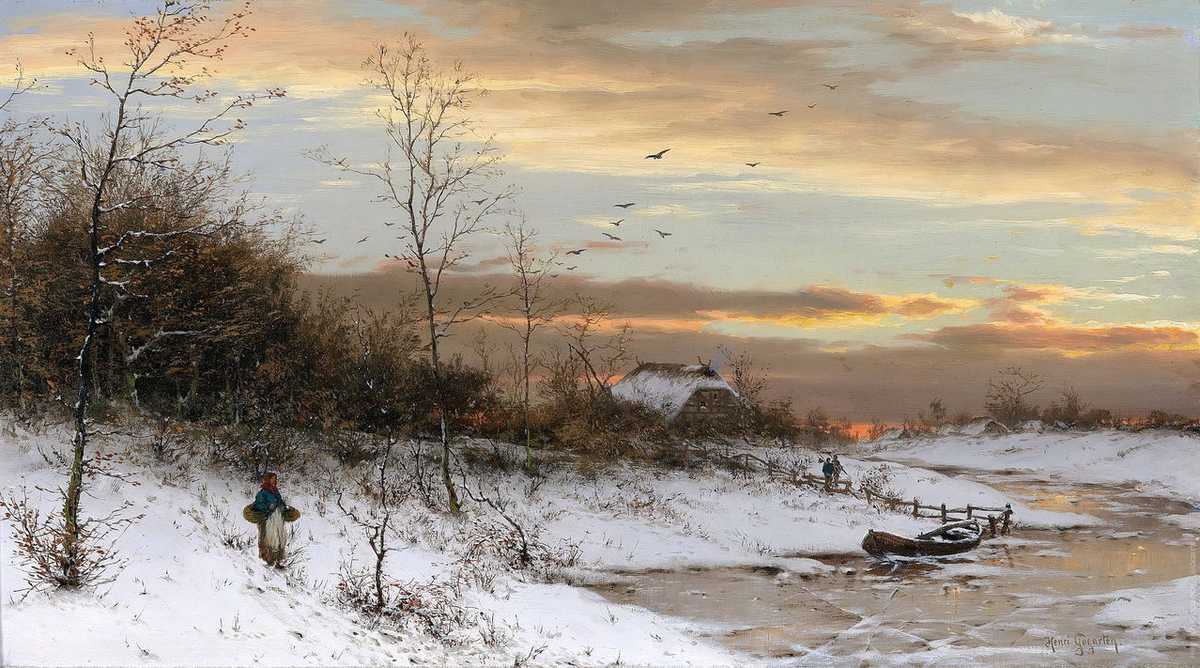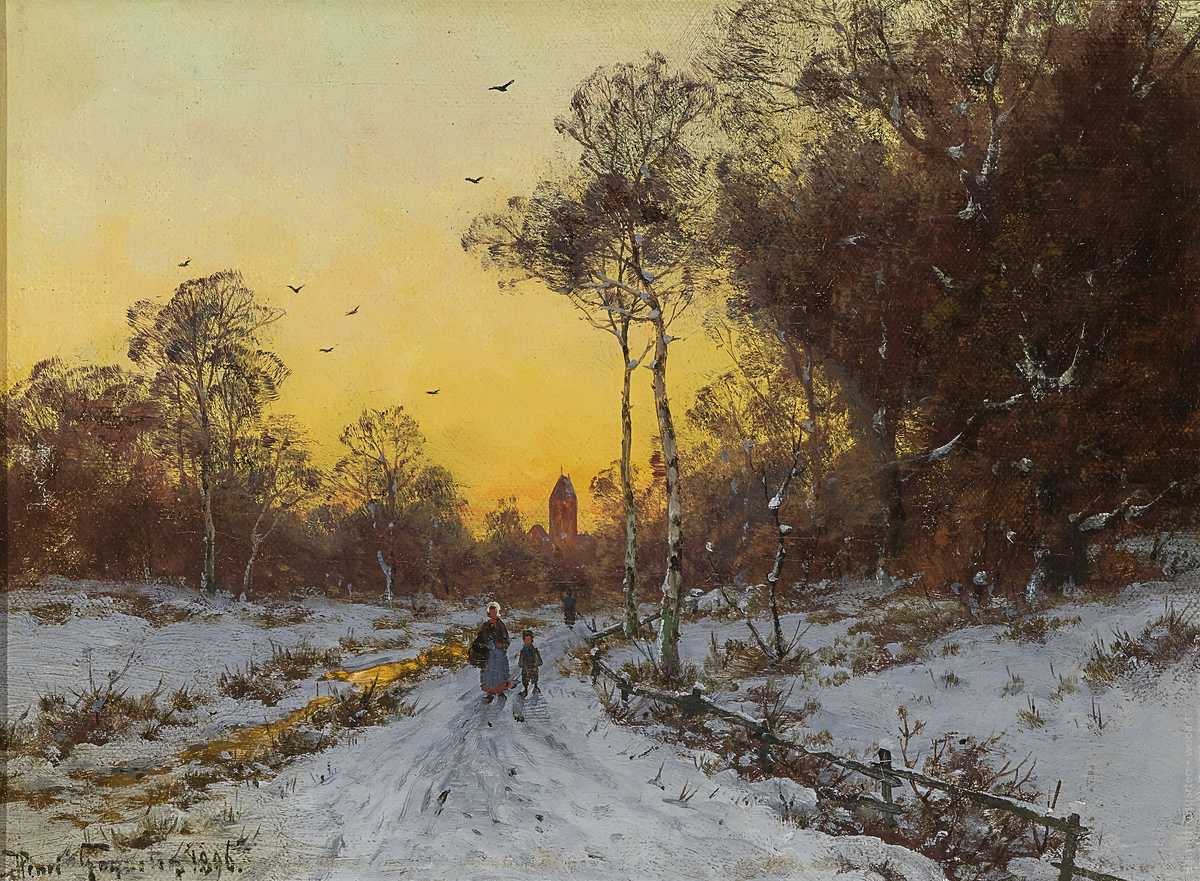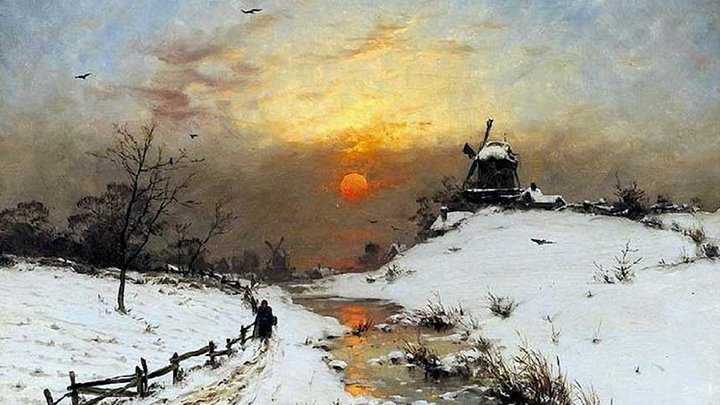His motives are initially from the North of Germany, …”, mood, translucent, partially minimal impasto genre painting, Oil on canvas, signed lower right and indistinctly dated “H. Gogarten [18]76?”, Verso on the stretcher frame fragmentary label with Info about the artist, Craquelure, minimal in need of restoration, beautiful gold stucco frame, framed, Falzmaße approximately 28.5 x 36 cm.
Artist Info
Actually, Emil Heinrich Gogarten, Henri or Henry Gogarten, dt. Still life and landscape painter (1850 Linz a. Rhein and 1911, Munich), studied 1864-69 at the Düsseldorf Academy with Andreas and Carl Müller and Heinrich Lauenstein, here 1867-69 pupil of Oswald Achenbach, 1874-77 study stay in Paris, from 1878 on, in Eppendorf, near Hamburg, from 1889, in Munich, and, finally, in 1891, in Dachau, and, starting in 1897, the participation in the glass Palace exhibitions, fed 1899-1901 the Great Berlin art exhibition, in addition to exhibitions in Bremen, Dresden, Hannover and Hamburg, from 1902, in Karl field, Dachau resident, a member of the Munich artists ‘ cooperative, source: Thieme-Becker, Saur “Bio-bibliographic directory of artists, students lists of the düsseldorf Academy, Thiemann-Stoedtner, and Hanke “Dachauer Maler”, Müller-Singer, Bénézit, Bruckmann, “Munich painters of the 19th century./20. Century” and “lexicon of the düsseldorf school of painting”, Rump, Dressler and Wikipedia.
Gogarten studied at the Düsseldorf Academy under the renowned landscape painter Oswald Achenbach. His mostly wintry motifs are characterized by an effective use of light. The image presented here shows a winter landscape with river and adjoining birch grove. A narrow path winds its way through the field, on which some of the figures walk along. The overcast sky opens up at the horizon and lets the setting sun’s last rays shine through, creating a quite outstanding evening atmosphere.
The painting is signed and dated ‘H. Gogarten 1883’. Small retouched spot at the bottom left, otherwise overall of good preservation. The stretcher measures 55 x 75 cm. The framed dimensions are 69 x 89 cm. The frame shows slight signs of use.
Heinrich Gogarten (1850-1911)
Heinrich Gogarten, also called Henri or Henry Gogarten, was born in Linz am Rhein in 1850. He attended the Dusseldorf Art Academy from 1864 to 1869, where he studied under the renowned painter Oswald Achenbach. After that, he lived for several years in Paris. Back in Germany he settled in Hamburg, a short time later he moved to Munich. There he joined an artists’ colony Dachau. His works, mostly winter motifs, are characterized by an effective use of light. He held exhibitions, among others, in the Art Academy Dusseldorf and the Munich Glaspalast.
Life:
Gogarten studied at the Düsseldorf Art Academy . From 1867 to 1869 he was a student in Oswald Achenbach’s landscape class . [1] With his support, he worked from 1874 to 1877 in Paris . He then returned to Germany and lived in Hamburg from 1878 to 1889 . In the summer of 1889 Gogarten settled in Munich and in 1891 joined the Dachau artists’ colony . In addition to exhibitions in the art academy , Gogarten was also able to exhibit in the Munich Glass Palace . In 1902 he moved to Karlsfeld near Dachau. Since 1880 he also had the Berlin academy exhibition and from 1899 to 1901 sent to the Great Berlin Art Exhibition .
Works
Gogarten, who also signed his pictures with Henri Gogarten, liked to paint winter landscapes. He took the motifs, for example, from the heather but also from the Upper Bavarian mountains, the Dachau moor and the Chiemgau . His pictures are in private hands as well as in the Lübeck painting collection, the collection of Prince Leopold of Bavaria or the Dachau gallery. [2]
- Hune grave in the Lüneburg Heath , oil, signed, undated (in private ownership)
- Westphalian landscape
- View of the village by the sea , oil on panel 60 × 75 cm, signed and dated 1886 (privately owned)
- Leaving steamer , miniature, watercolor, signed Hamburg 1889 (privately owned)
- Winter landscape with wild ducks, oil, signed, on the reverse. Dedicated and dated 1909 (privately owned)
- Walkers in the Forest (Winter Landscape), oil, signed, undated (in private ownership)
- Winter landscape with deer , oil, signed, dated 1906 (privately owned)
- Evening mood in the forest by the stream , oil, signed, undated (in private ownership)
- Evening mood by the lake , oil, signed, undated (in private ownership)
- Forest landscape
- Winter landscape with ice skaters
- Afterglow
- Painter in the mountains
- On the Gulf of Naples , oil 21 × 26 cm, signed and dated 1892
- Dachau summer landscape
- Brushwood collectors in the forest , oil / canvas, 50 × 40 cm, signed and dated 1890
- Summer landscape , oil / canvas signed, dated 1902, 32.5 cm × 52.5 cm
- Rattenberg am Inn , oil / canvas. 50 × 66 cm, signed and dated September 28, 1899
- Evening atmosphere
- Rocky landscape overlooking a lake
Gogarten, Friedrich
Friedrich Gogarten, the German theologian, was born in 1887 at Dortmund. After serving as a pastor in Thuringia, in 1927 he became professor of systematic theology at Jena and in 1935 moved to the corresponding chair at Göttingen. He was early associated with the new dialectical theology and its revolt against liberalism and idealism. Within this movement he stands nearer to Rudolf Bultmann than to Karl Barth, but he worked out a distinctive position of his own. His thought shows the influence of existentialist philosophy, but he claimed that it also continues the insights of Martin Luther, on whom Gogarten was a recognized authority. (1887–1968)
Gogarten believed that Luther delivered Christian theology from the hold of metaphysics. This achievement was obscured in the period of Protestant orthodoxy following the Reformation, but it is now time to revive his insights, which can be restated in terms of current existentialist philosophy. According to Gogarten, the major Christian doctrines were formulated under the domination of metaphysical categories, in an age when history was understood as a process that takes place within a stationary metaphysical framework and when the course of history was supposed to be determined by metaphysical factors. Deliverance from metaphysics makes it possible to take history with a new seriousness. Man is responsible for history and creates it by his decisions. So far are we from having an obligation to interpret history in the light of metaphysics that we must rather view metaphysical systems themselves as products of history. Christianity is not dependent on any metaphysical system but is rather the summons to a historical self-understanding, in which we accept responsibility for our own historical existence under the word of God, which addresses us in Christ.
These emphases, which Gogarten relates as much to the sola fide of Luther as to modern existentialism, are developed into a secular interpretation of the Christian gospel. The Christian faith brings man to maturity and strips the world of every mythical or numinous property. The world is deprived of its religious power and is handed over to man as the son who has come of age, the heir to whom God has entrusted the creation. These views are related by Gogarten especially to the teaching of St. Paul in Galatians 4:1–11.
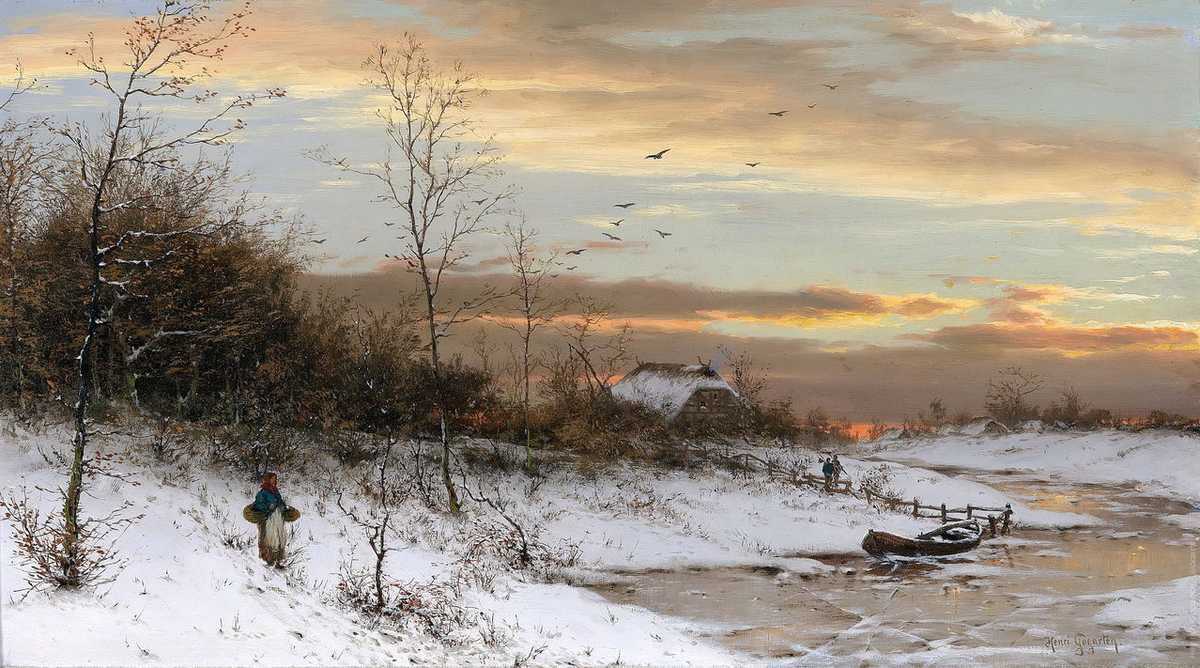
View Heinrich Gogarten Paintings
-
source: encyclopedia.com
-
Source: veryimportantlot.com
-
source: wikipedia
-
source: icollector.com


